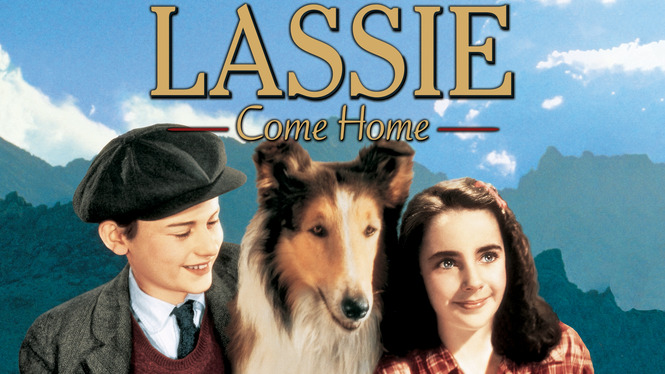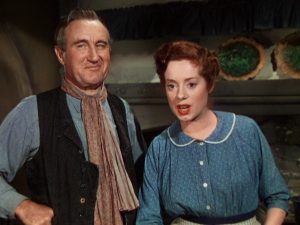lassie come home 1943

Lassie Come Home (1943) – Movie Review
Lassie Come Home (1943) is a timeless family classic directed by Fred M. Wilcox, based on the 1940 novel by Eric Knight. The film tells the heartwarming and enduring story of a loyal Rough Collie named Lassie, who embarks on an incredible journey to reunite with her beloved family. As one of the earliest cinematic representations of the iconic Lassie character, the film is notable for its emotional depth, stunning visuals, and moving performances, making it a beloved piece of film history.
Plot Summary
Set in pre-World War II England, Lassie Come Home follows the Carraclough family, who are forced to sell their beloved dog, Lassie, due to financial hardships. Lassie is sold to a wealthy Duke (Nigel Bruce), who takes her far away to his estate in Scotland. However, despite the distance and obstacles in her path, Lassie is determined to return to her true home.
Lassie escapes from the Duke’s estate and embarks on an epic journey across the British countryside, facing numerous challenges along the way. As she travels, Lassie encounters kind strangers who offer help, including a young girl named Priscilla (played by a young Elizabeth Taylor). Throughout her perilous journey, Lassie’s unwavering loyalty and determination to reunite with her young master Joe (Roddy McDowall) are the emotional core of the film.
Themes
The central theme of Lassie Come Home is loyalty, particularly the bond between a dog and its family. Lassie’s determination to return home exemplifies the idea of unconditional love and devotion, even when circumstances are beyond her control. The film highlights the emotional connection between humans and animals, emphasizing how deep and meaningful these relationships can be.
Another important theme is perseverance in the face of adversity. Despite the numerous challenges and hardships Lassie encounters—harsh weather, treacherous landscapes, and human obstacles—her unwavering commitment to returning home showcases the power of resilience and hope.
The film also subtly addresses the effects of economic hardship on families, as the Carracloughs are forced to make difficult decisions due to their financial situation. This adds a layer of realism and emotional complexity to the story, making Lassie’s journey not just about a dog returning home, but also about a family’s struggle to stay connected.
Performances
Roddy McDowall delivers a touching performance as Joe Carraclough, the young boy whose bond with Lassie is at the heart of the film. McDowall portrays Joe’s love for Lassie with sincerity, making their eventual reunion all the more moving. His portrayal of a boy trying to cope with the loss of his beloved pet is deeply affecting and adds emotional weight to the story.
Elizabeth Taylor, in one of her early roles, brings warmth and charm to the character of Priscilla, the Duke’s granddaughter, who helps Lassie along the way. Though her screen time is limited, Taylor’s performance is memorable, and her interactions with Lassie add a sense of kindness and compassion to the film.
Nigel Bruce is effective as the Duke, whose initial indifference to Lassie gradually transforms into admiration for the dog’s tenacity. The supporting cast, including Elsa Lanchester and Edmund Gwenn, also deliver solid performances, rounding out the film’s emotional and dramatic beats.
However, the true star of the film is Lassie herself. Played by a male Rough Collie named Pal, Lassie’s character is brought to life with an incredible sense of intelligence and emotion. The bond between Lassie and the Carraclough family feels authentic, and her journey across the English countryside is both inspiring and heartbreaking.
Visuals and Direction
Lassie Come Home is beautifully shot, with breathtaking views of the English and Scottish countryside that enhance the epic scope of Lassie’s journey. The film’s cinematography captures both the beauty and the danger of the natural world, making Lassie’s trek feel grand and perilous. The rural landscapes and period settings also add an element of authenticity, drawing viewers into the world of the film.
Fred M. Wilcox’s direction focuses on the emotional weight of the story while balancing moments of suspense and tenderness. He allows the film’s quieter moments—like Lassie’s interactions with Joe or her brief respites with friendly strangers—to resonate emotionally. The pacing of the film gives the audience time to appreciate Lassie’s challenges and triumphs, making her final return home all the more impactful.
Emotional Impact
Lassie Come Home is a deeply emotional film, particularly for animal lovers and those who appreciate stories about the bond between humans and animals. Lassie’s determination to find her way home and the challenges she faces evoke a strong sense of empathy and attachment. The film’s themes of loyalty, resilience, and love are universal, making the story resonate across generations.
The film’s final moments, when Lassie finally reunites with Joe, are particularly moving. The emotional payoff of seeing Lassie’s journey come full circle, and the joy on Joe’s face when he sees his loyal companion again, is heartwarming and rewarding.
Legacy
Lassie Come Home not only became a beloved family classic but also launched Lassie as an enduring cultural icon. The success of the film led to numerous sequels, a long-running television series, and the continued popularity of Lassie as one of the most famous dogs in film and television history. The film remains one of the definitive dog movies and a touchstone for stories about the loyalty and love between humans and animals.
Verdict
Lassie Come Home (1943) is a timeless and heartwarming classic that continues to resonate with audiences today. With its beautiful cinematography, strong performances, and emotional depth, the film remains a powerful story about loyalty, love, and the unbreakable bond between a boy and his dog. For fans of family films and animal lovers, Lassie Come Home is a must-see that will leave viewers both uplifted and moved.











